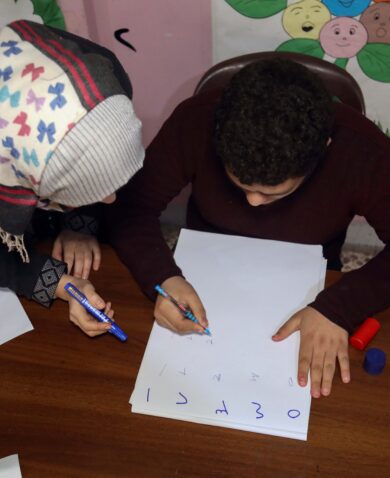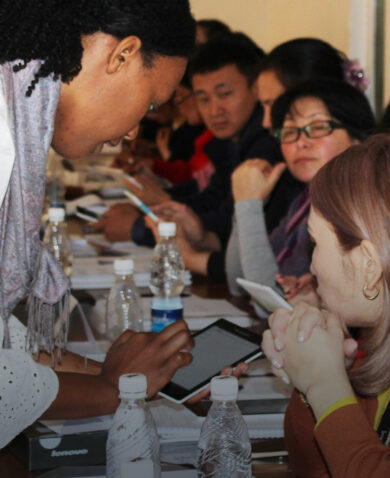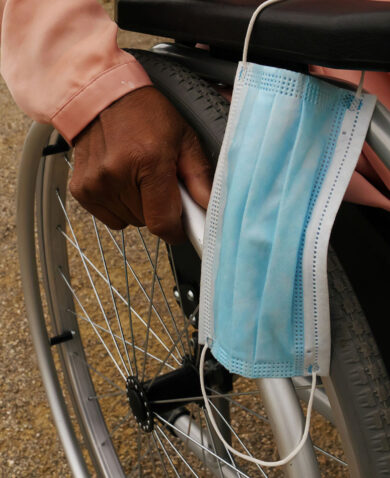
3 Ways to Integrate Disability Inclusion and Accessibility in Procurement
December 2, 2022 | 4 Minute ReadMore than 15 percent of the world’s population have a disability, and face obstacles that limit their participation in daily life activities.
People with disabilities often do not have access in their workplaces, at trainings, and workshops, and lack accommodations such as a ramp or elevator, sign language interpreters, real-time captioning, braille and/or enlarged text that facilitate their participation in society on an equal basis with others. Concurrently, although well intentioned, public policies aimed to support people with disabilities often inadvertently continue to perpetuate stigma and discrimination. To ensure inclusion and accessibility, development professionals have tools available to facilitate greater accessibility for our colleagues, partners, and communities around the world – but we may not all be aware of them or utilizing them to the fullest potential.
As development industry professionals, we can all take steps in our everyday work to ensure that persons with disabilities are acknowledged and recognized in program procurement. When disability inclusion and accessibility specifications are included in the procurement process, projects can increase the number and diversity of participants and increase innovations that benefit both persons with disabilities and persons without disabilities. Development practitioners can advance disability inclusion and accessibility while also meeting donors’ disability policies in their existing project implementation work by mainstreaming disability inclusion and accessibility specifications in the procurement process. The following sections offer examples with recommendations for development professionals to better account for disability inclusion and accessibility.
1. Prioritize Inclusive and Accessible Vendors and Products
When conducting market research to identify potential vendors, consider those who can meet technical requirements while also providing inclusive and accessible products. Further, consider key accessibility and inclusion requirements when developing specifications. For example, when creating the technical requirements for a conference venue for training, consider requiring the venue to offer a ramp or elevator when there are stairs for people with a disability that limits mobility, bright lighting for people with low vision, spacious seating for people who use mobility assistive devices, signage with large text to aid reading for people with low vision, and audio-visual equipment for people who are deaf or hard of hearing.
By incorporating these elements in a well-crafted solicitation, offerors can be encouraged to be innovative, flexible, and responsive with their submissions, which contributes to the procurement goal of provision by the awardee of the right products at the right time and at the right cost. Taking these steps can strike a balance between the need to satisfy procurement process requirements, while improving the likelihood that any selected product benefits the greatest number of users.
Moreover, the project can request past performance information to include examples of how vendors made their products inclusive and accessible and that would give the project a higher confidence in vendors’ competency in disability inclusion and accessibility.
2. Ensure Inclusion and Accessibility in the Solicitation and Evaluation Processes
When listing the technical requirements for a product, take the time to research what accessibility criteria should be incorporated, including reviewing section 508 accessibility requirements and Universal Design Principles. Also, engage with locally led organizations of persons with disabilities to have them assist in mapping out the disability inclusion and accessibility criteria.
For example, when procuring software or a phone app, consider criteria such as the ability to resize text, closed captioning in videos, alt text in images, and the ability to change the color of text and background. When procuring stationary supplies for training, consider specifying the colors of markers and color of the flip chart that would contrast well with each other and enable participants to read easily.
Consider the pros and cons of the two procurement approaches, lowest price technically acceptable (LPTA) and tradeoff, in the context of accessibility and inclusion. Using LPTA is typically best for simple procurements, when the lowest price is expected as the result, and using a tradeoff approach is often best for more complex procurements that require determining best value through evaluation of an offeror’s pricing and technical approach to a scope of work. LPTA ensures that all accessibility and inclusion criteria are met because when it is not met, even when the offer is the lowest price, it disqualifies the vendor from the competition. However, it does not give the project the ability to place more value on the accessibility and inclusion requirement than on other technical requirements. When utilizing a tradeoff approach, the project can determine the points weighted for accessibility and inclusion criteria and has the flexibility to make this a higher priority by assigning more points than the other technical requirements.
3. Include Accessibility and Inclusion Requirements in the Inspection Process
An important aspect of the procurement process is completing a timely inspection of goods received, which leads to either acceptance or rejection of such items. This often involves completion of a document detailing the outcome of the inspection process. When creating an inspection report, ensure the inspector has access to the requirements regarding any accessibility requirements. When the project staff reviews the deliverable, verify and document that all accessibility requirements have been met. Ask the staff members and/or participants of the project who have a disability for their feedback on the acceptability of accommodation and incorporate their feedback in the Inspection Receiving Report. If the vendor does not meet the requirements, work with the vendor to identify ways to make their products more accessible.
Including accessibility considerations in procurement processes to identify usable, safe products that meet everyone’s needs is an excellent tool to advance inclusive development. When development practitioners highlight accessibility requirements as part of the specifications in procurement processes, people with all types of disabilities – in all their diversity, and at any stage of life – are able to equitably access the environment around them. Simply being more intentional about accessibility in procurement can greatly impact how people with disabilities actively participate in, contribute to, and improve their communities globally.
Posts on the blog represent the views of the authors and do not necessarily represent the views of Chemonics.
























